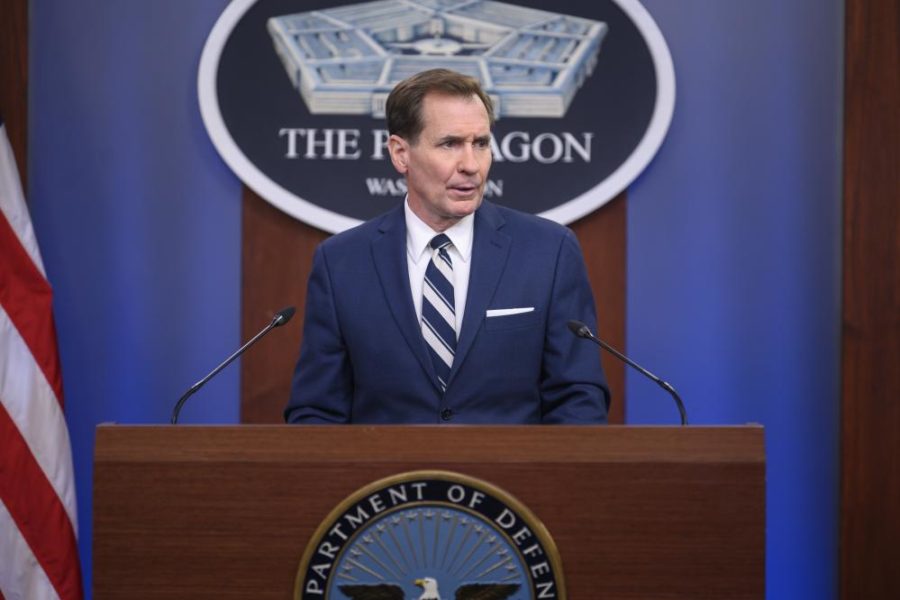Russia’s invasion of Ukraine has changed the security situation in Europe, and the U.S will have to shift its long-term military posture there as a result—but it’s too soon to say how, according to Pentagon Press Secretary John F. Kirby. Kirby also said Russia seems to be trying to “learn from its mistakes” in Ukraine but still has most of its pre-war combat capability, despite its losses.
“The European security environment has changed and will stay changed as a result of Mr. Putin’s willingness to conduct an unprovoked invasion of a neighboring state,” Kirby said in a press conference. Russia’s military “failures notwithstanding, that war is still ongoing” and is prompting a review of the U.S. posture in Europe, he said. While Kirby had “no answers for you today” about what those will be, discussions are ongoing within the Pentagon and with allies and partners, and no decisions will be made “without full consultation” with them.
Asked if it was true that Russia retains some 85 percent of the conventional combat capability it had before the Feb. 22 invasion, Kirby declined to quote figures.
“I don’t want to get into percentages and specific data here on their combat power,” he said. “I would just say that we still believe that they have the vast majority of their combat power available to them, even with the losses.” For the invasion, Russia assembled a combined-arms team including “aviation, armor, artillery, infantry, special operations, airborne … and they still have a majority of that available to them, even with the losses that they’ve sustained in the last few weeks,” Kirby said.
Air Force Chief of Staff Gen. Charles Q. Brown Jr. said April 12 that the Ukraine war had not appreciably changed the service’s assessment of forces needed for the European theater, as USAF had been contemplating the European situation since it began withdrawing forces from the Middle East over the last couple of years. The invasion was predicted by intelligence last fall and had largely been accounted for in the fiscal 2023 budget, Brown said. Still, USAF has moved additional fighters, tankers, and intelligence, surveillance, and reconnaissance aircraft into the European theater over the past few months, as well as bombers on a rotational basis, all to reassure NATO allies who feel threatened by the invasion of Ukraine.
Kirby said Russia is “trying to learn from past mistakes” in its invasion and that the appointment of Gen. Alexander Dvornikov as commander of all Ukraine operations is an acknowledgement that the initial operational concept for command and control was flawed, as was the concept for logistics, which Kirby characterized as a failure. It’s “too soon to know” if Russia has effectively learned much from its mistakes so far, he said.
Kirby also reported that some Russian units that launched attacks on Kiev are being withdrawn to Belarus for “refit” and will probably “go back in” when they are re-equipped and resupplied.
The Pentagon has said repeatedly that while the invasion of Ukraine makes Russia an “acute” threat, China remains “the pacing threat” according to summaries provided of the new National Defense Strategy, an unclassified version of which has yet to be made public.
